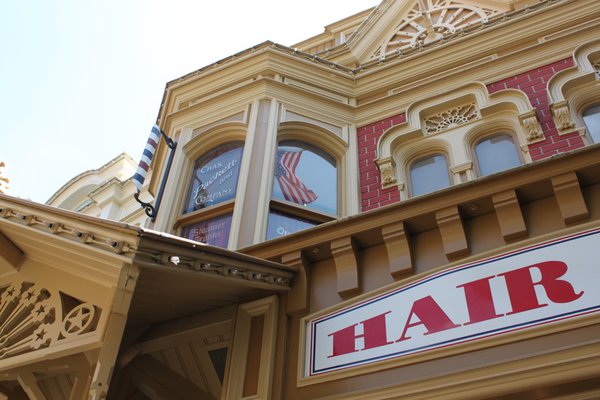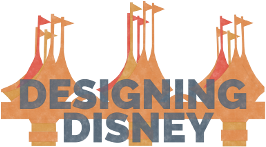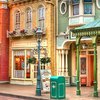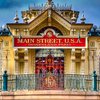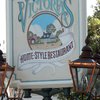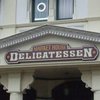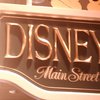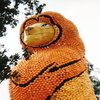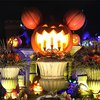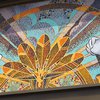Designing Main Street USA – Dapper Dan’s Hair Cuts
Disneyland Paris is a place of fun and excitement. It’s beautiful and truly unique in its kind!
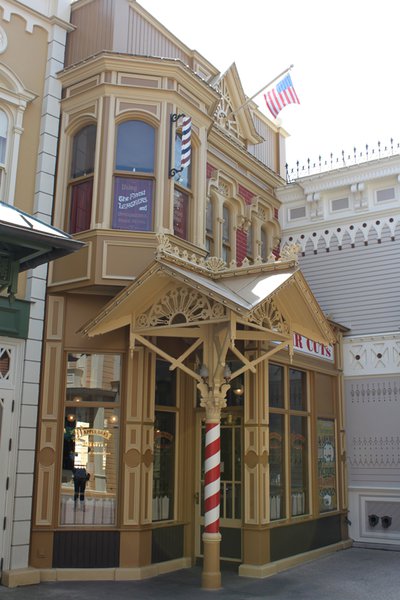
The Resort offers experiences that can’t be found at any other European theme park. For example, at the Disneyland Park, you can have a haircut or classic wet shave. That’s right! There’s an old-fashioned barbershop on Main Street USA, called “Dapper Dan’s Hair Cuts”.
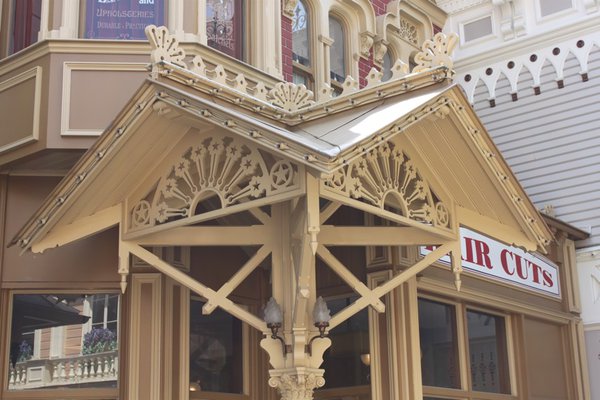
In this article, former Walt Disney Imagineer, Eddie Sotto (Show Producer, Main Street USA, Disneyland Paris) takes us on a tour of “Dapper Dan’s Hair Cuts” to point out some noteworthy elements and explain how this marvelous place pays tribute to the American barbershop from the turn of the twentieth century.
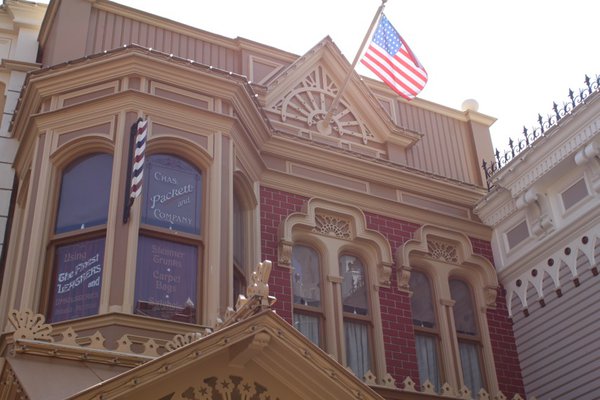
The exterior
The facade of “Dapper Dan’s Hair Cuts” is an exact copy of the exterior of the 1971 “Harmony Barbershop” that used to be located on West Center Street at the Magic Kingdom.

The windows of “Dapper Dan’s Hair Cuts” are adorned with gold leaf signs. Gold leaf signwriting or glass gilding is the art of hand lettering glass doors and windows with gold leaf. Gold leaf is gold that was pounded into very thin sheets. A gilded sign radiates a luxurious sophistication befitting any business that wants to stand out from its competition.
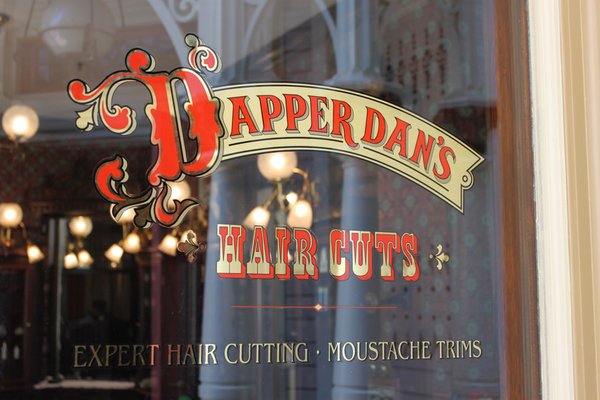
Eddie Sotto’s grandfather was a gold leaf sign writer. As a child, he used to watch him paint windows himself. Eddie Sotto remembers that it was quite a delicate process.
First, the outline of the letters is painted on the front of the window. Then the outline is filled with gold by applying gold leaf on the back of the window by using a mixture of water and gelatin as a glue.
Once the glue has set, the surface is gently burnished to remove creases and any loose pieces of gold. To cover up holes and repair damaged areas, a second pass is almost always required. It will be applied and burnished in the same way as the first.
Next, the required design is marked out on the layer of gold. The areas that need to remain gold-colored are painted over with a flat oil paint. Once the paint has thoroughly dried, the gold, which is left unpainted, can be cleaned of with water and a fine abrasive.
On the right side of the façade of “Dapper Dan’s Hair Cuts”, one can see a mirror painting. Applying a mirrored surface to a window was something that was occasionally done to create a very striking graphic. The mirror painting features the facility’s original name “Harmony Barbershop” (1992-1995).
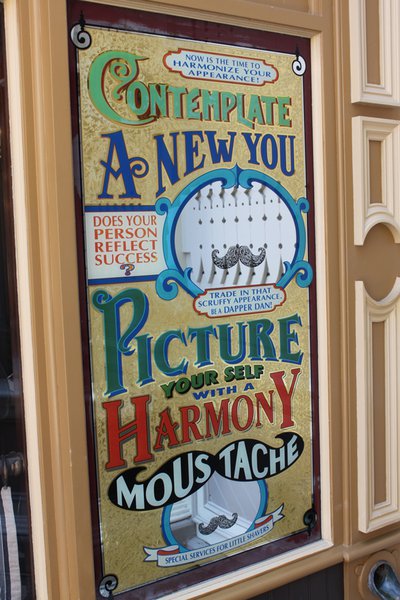
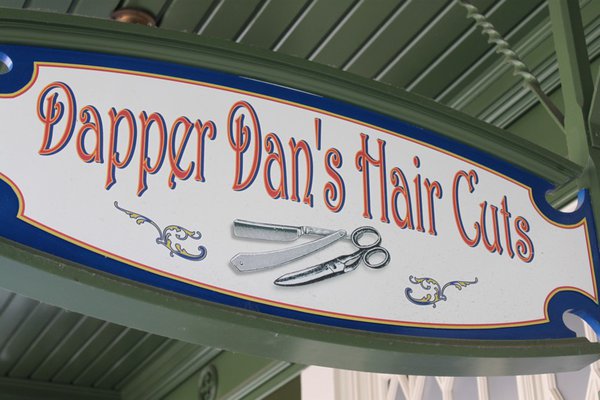
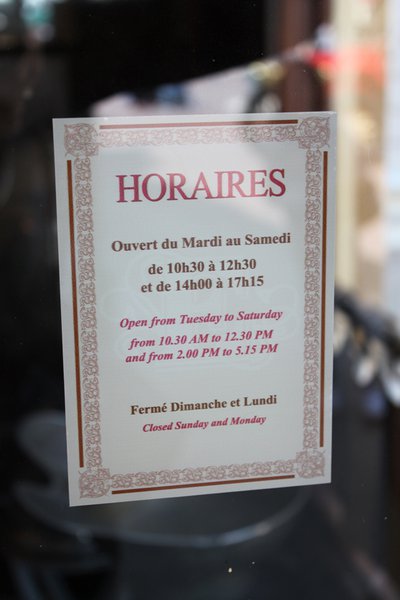
The interior
Eddie Sotto and his team looked at photographs of barbershops and tonsorial parlors at the turn of the twentieth century to design the interior of “Dapper Dan’s Hair Cuts”.
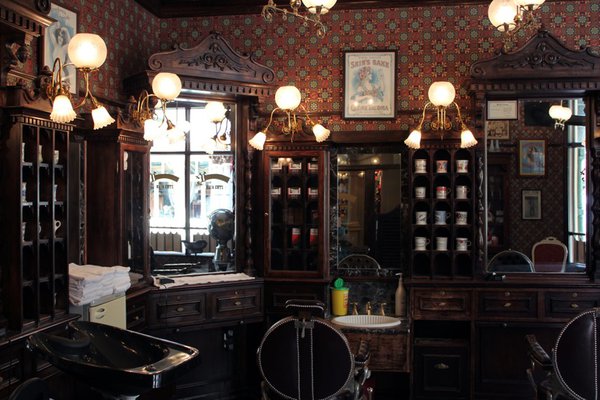
The floor of the barbershop has a black-and-white checkerboard pattern. That was typical for barbershops all the way up to the early 1920s.
Close to the entrance, there is a nickel-plated copper device on a cast iron enameled base. That is an antique towel steamer. In a barbershop, a hot towel is applied to the face of the client to soften the beard so that a close, comfortable shave can be given. Furthermore, these steamers were used as a source of hot water to create soap lather.
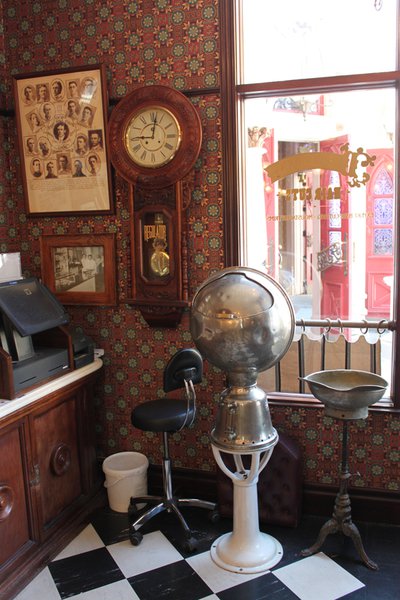
The towel steamer mainly consists of three parts. The power source is located in the base. It heats the water stored in the middle part. The heat turns the water into steam, which is directed into the domed upper compartment holding the towels.
The steamer on display at Disneyland Paris resembles the ones that were sold under the “The Globe” name. They were manufactured in the late 1800s by the “Chrisholm Company” of New York. This model seems to have been gas operated. Older ones were coal fired.
The walls of “Dapper Dan’s Hair Cuts” were covered in maroon colored wallpaper to give the space a masculine feel. The motifs are based on real Victorian designs. The wallcovering was silkscreened by hand by a company called “Bradbury & Bradbury Art Wallpapers”.

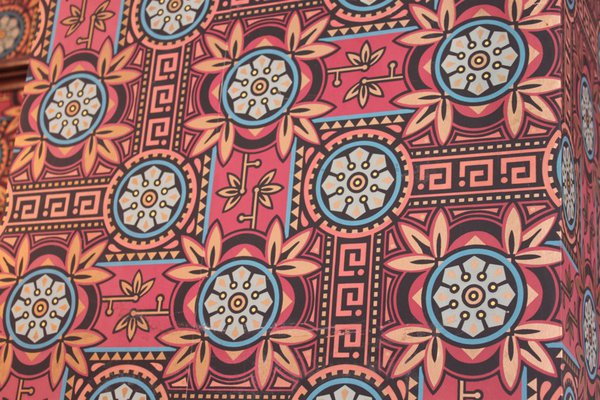
The barbershop is also equipped with an old-fashioned telephone. As most of you will know, it allows you to listen in to the conversations of the residents of Main Street USA. According to Eddie Sotto, the recordings for the Main Street telephones were done in Paris.
Eddie Sotto and his colleagues Craig Fleming and Gabrielle Reynolds were primarily the voices on the phone calls. Eddie Sotto created the basic concepts for the conversations and Craig Fleming was responsible for the written scripts.
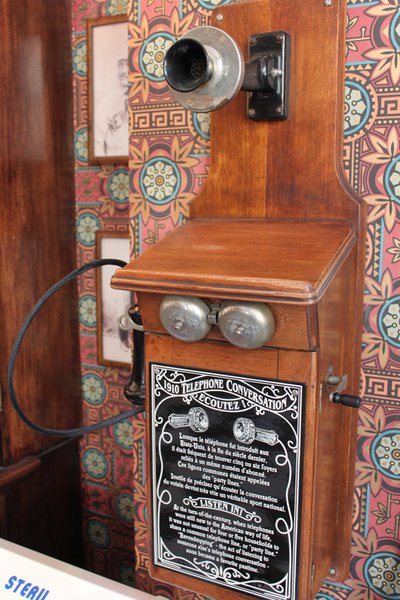
Eddie Sotto recalls that the Walt Disney Imagineering prop buyers had to search high and low to find antique barber chairs that were of the time period that was needed. In the end, they found some that were manufactured by the “Theo. A. Kochs Company”.

This company was established in Chicago around 1871. It was one of the first companies to be in the barber supply business. Their chairs were reputable because they had features that models made by others didn’t have and because they were constructed with high quality materials.
Companies like the “Theo. A. Kochs Company” sold every item a barbershop might possibly need. It produced poles, shelves, mirror cases, stools, workstands, washstands, wall clocks, combs, brushes, shears, razors, pomades and many other items. That is clearly illustrated by this catalogue . Illustrated catalogues of barbers’ supplies were a great source of inspiration for Eddie Sotto and his team to define the interior design of “Dapper Dan’s Hair Cuts”.
Inside “Dapper Dan’s Hair Cuts”, one can see exposed wiring and an electric fan on the wall. It’s a wonderful illustration of how Main Street USA is moving into the era of electricity.
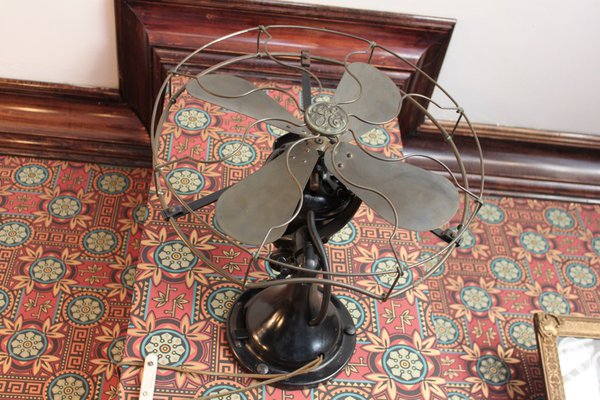
The cabinetry is typical of barbershops at the turn of the twentieth century. They hold many shaving mugs and moustache mugs. A shaving mug is an essential tool to perform a wet shave. In order to obtain the lather needed, a bar of soap is placed into the mug and then scrubbed with water and a bristle brush. While sharing the same piece of soap is unhygienic, a barber used to have a shaving mug with a cake of soap for each of its patrons.
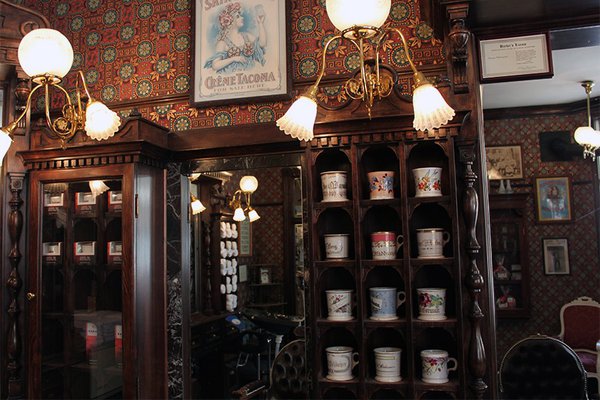
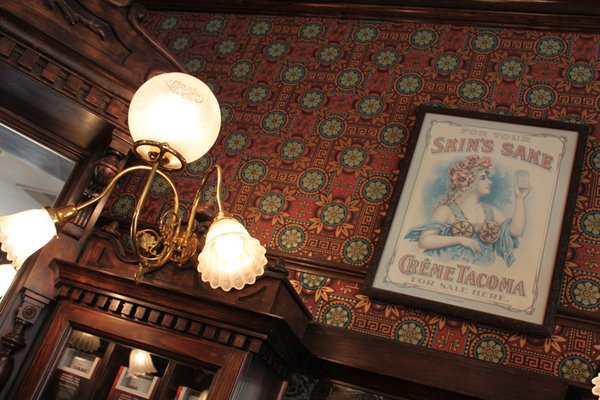
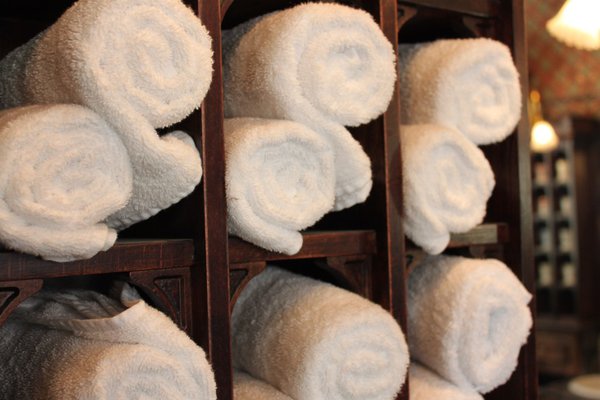
The shaving mugs were usually designated with the client’s name and sometimes a special, hand painted image. That could be a decorative floral motif, the illustration of the man’s occupation or fraternal organization he was in. Based on the images of shaving mugs, historians can find out the social and merchant history of a town or neighborhood.

In many barbershops, a fitted shelf held spots for the mugs of its patrons. The status of a barbershop was boosted by the number of mugs on display and the type of occupations / fraternal organizations depicted. Having a personalized shaving mug for everyone to see also encouraged customers to return to the barbershop regularly.

A moustache mug is a drinking cup that has a special design to keep a moustache from getting wet. It has a semicircular ledge with a half moon-shaped opening inside. The opening allows the passage of liquids while the ledge prevents a drink from dampening the moustache.
One of the cabinets also features what is called a spittoon. It’s a pot with a funnel-shaped top that was used for spitting used chewing tobacco into. They were common in places where men would hang out. The spittoon at “Dapper Dan’s” is not authentic. There are no historical records supporting the notion a “Redskin Brand Chewing Tobacco” ever existed in the past.
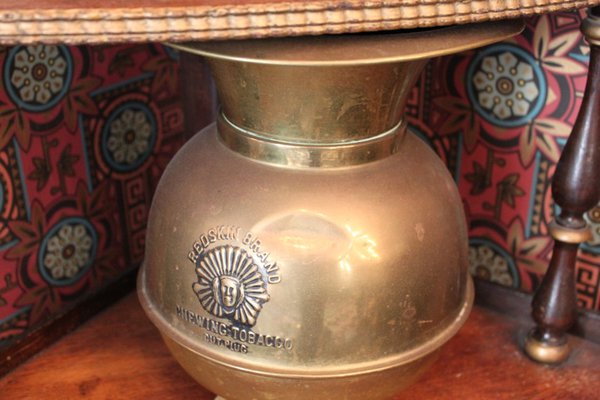
Not unlike the manager’s office of the former “Town Square Photography” camera store, the “Dapper Dan’s Hair Cuts” barbershop represents to Eddie Sotto a time capsule type environment. This was the social gathering place for gentleman of Victorian times where they would discuss all their own popular topics like sports, boxing, politics, and maybe even women. This provided for him an opportunity to really create a lot of storytelling as to what those times might have been like. Eddie Sotto was really pleased with what he and his team were able to accomplish on the barbershop because he thinks they took it to a really realistic level of storytelling and experience.
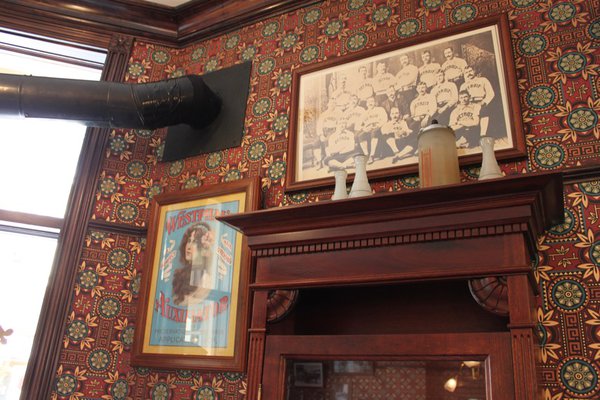
The fact that you can get an old fashion shave or haircut in the environment makes it that much more special and something that truly can be defined as a Disney experience!
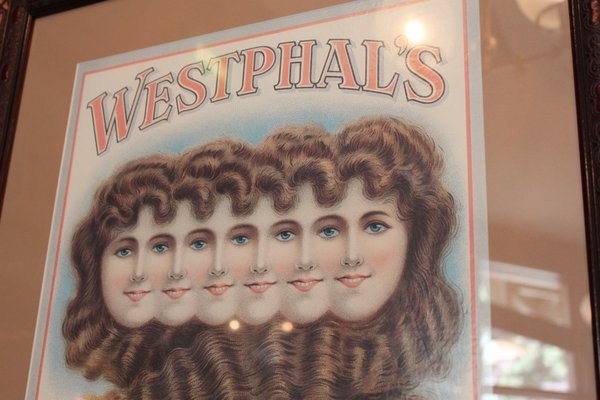
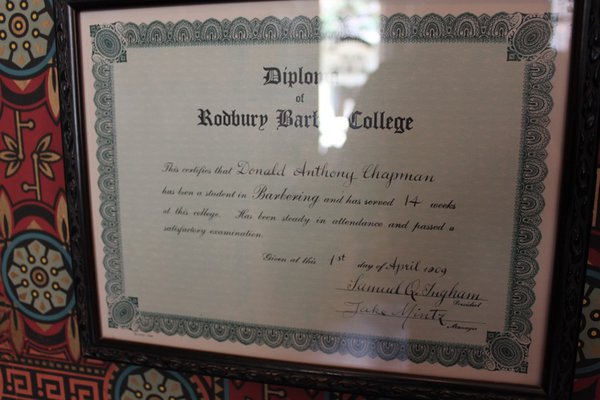
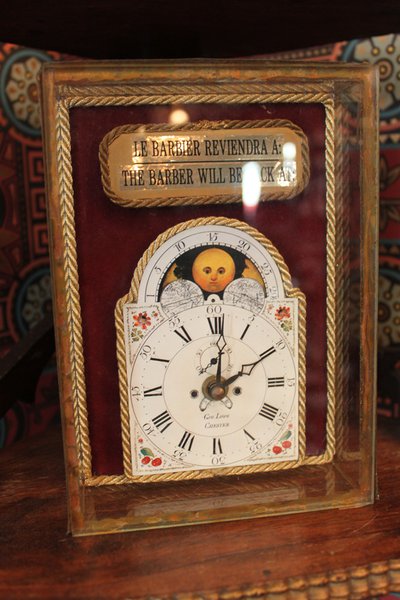
I sincerely thank Eddie Sotto for enabling and helping me to write this article. As an enthusiast of the wet shave ritual, I adored researching the history of the American barbershop!
